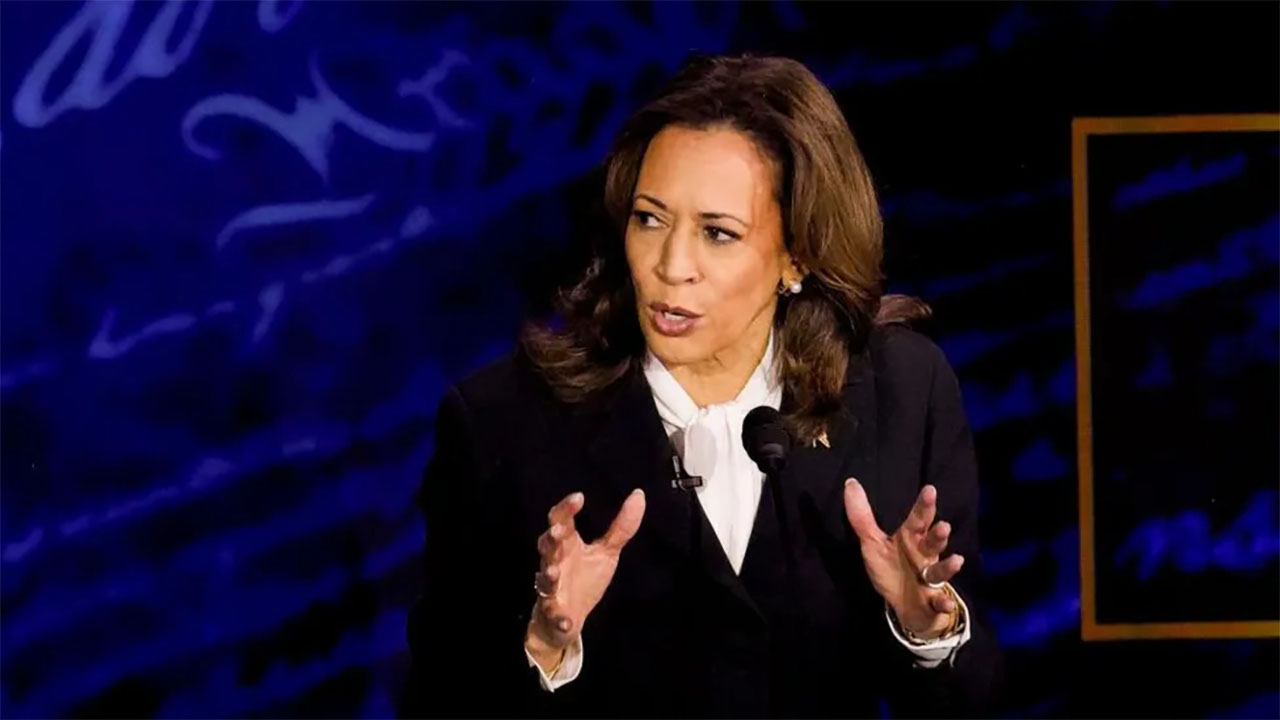On Tuesday evening, America and the rest of the World got a good look at the future.
Kamala Harris, the new Democrat contender, seized the moment to introduce herself to the electorate and politics watchers. She took the opportunity with both hands, managing to balance the right mix of sassy wisecracks, serious politician and meme-able moments so vital to modern campaigning.
Across the board, Kamala Harris was declared ‘the winner’ – even Fox News called it for Harris.
Their British firebrand Piers Morgan said “Wow. Kamala Harris won that debate… comfortably.”
But when the debate dust settles, what will the impact be on the outcome of the poll which really matters – the November 5th election?
Despite Trump’s car crash performance – a mix of half-truths and rambling non-sequiturs – the first post-debate polls indicate not much has changed. In part, that is because of the electoral system the US uses.
The US election of a President is all about amassing enough delegates to the electoral college to secure the White House, and those delegates are awarded in different numbers across states of different sizes. 538 in total means 270 delegates is the winning post.
It is a curious process, mapped out in the second article of the Constitution, but one which isn’t without its critics.
Each state appoints delegates to the electoral college based on a simple calculation – the number of state senators plus the number of representatives. All States have 2 senators, but the number of representatives rises and falls with population. Consequently, California has 54 delegates, followed by Texas (40), Florida (30) and New York (28). The District of Colombia, Alaska, Delaware, North Dakota, South Dakota, Vermont and Wyoming are the least populous states and have only 3 electors.
Where your voters live matters. There is a calculation trotted out each election by critics of the system that show you only need to win 12 states to achieve the magic 270 number of delegates.
This year’s election however, set against the backdrop of polarisation which divides the nation, is likely to be decided by just a few thousand votes in a handful of battlegrounds in seven swing states.
Residents of Wisconsin, Michigan, Arizona, Nevada, North Carolina and Georgia will all have a say, but it is widely believed that electors in Pennsylvania will hold the casting vote.
Pennsylvania has 19 Electoral College votes and has changed hands between the parties in the past three elections. The demographics of the state are key too.
Nearly three-quarters of the state’s population are non-Hispanic white. 12% of the population is African American and 9% is Hispanic.
Pennsylvania also has an older-than-average population, 20% of her people are over 65 years of age. And the suburban counties around Philadelphia and Pittsburgh are home to soccer moms and BBQ dads, a key demographic nationally.
So, what did Tuesday’s debate mean to voters in the aptly dubbed Keystone State?
They broadly agreed Harris won the debate, Trump supporters acknowledged their guy had a terrible 90 minutes, but very few said they were considering changing their vote.
And that is perhaps the story of this election. I’m no fan of the Big Orange One, but he has found a core demographic who are responsive to his message – if only he could stick to it.
The three concerns the electorate repeatedly talk about is the economy (stupid), immigration and what are loosely viewed as American values. These are all big opportunities for Trump to cement his polling lead in Pennsylvania.
While he was clearly needled by Harris and his narcissistic thin skin meant he couldn’t refuse her bait about the size of his popularity or the views of former colleagues and staffers about his suitability for the job, it doesn’t change the fact that his core message still resonates.
People recall nostalgically his ‘low tax’ economy, they react positively to ‘closing the southern border’ and are enthused by the jingoism of ‘America First’, ‘Make America Great Again’ and the anti-politics of ‘Drain the Swamp’.
On all three key issues Trump is ahead of his rival – ‘comfortably’ – to use Piers Morgan word.
But he is a clown, His ramblings petty name-calling and unstructured approach to campaigning are turning those who are sympathetic to his ideas away from him.
But those voters aren’t moving towards the Democrats and Kamala Harris and that, worryingly, could be what decides it.
The Democrats, a little like centre left parties across the globe, are dependent on a broad and diverse church with often competing and clashing views.
As centre left parties in Europe and elsewhere have seen, their core working-class, non-college educated voters have deserted them in droves when it comes to issues like immigration, self-determination or economic security – not just because they no longer see or hear the Left representing their values and views, but increasingly they see them as the problem.
The Democrats under Californian lawyer Kamala Harris are equally struggling to connect with wavering Trump voters and their concerns.
Democrat campaign purists will say they don’t want to pander to the views of disillusioned Trump voters. But US politics is changing quickly and with just 50 days left, some big decisions are needed.
Team Kamala needs to find language and policy positions which address the very real concerns US citizens have about the direction of travel for the nation without dissolving into Trump-style nativism, nationalism and racist dog whistles.
If there is to be another debate before the election, it would be the last chance for both candidates to shore up their core voters and make appeals to those whose vote is still up for grabs.
For Trump that means to focus on his core message which plays on people’s dissatisfaction and distrust of the elite, establishment and institutions– ‘America isn’t working for you” is his cry.
For Harris, and her more folksy VP choice Tim Walz, they have to connect with voters looking for change – a tough ask when you are the incumbent administration.
Democrat campaign teams and pollsters need to plot a course which wins the support of non-traditional or lapsed Democrat voters in key states like Pennsylvania without sacrificing the support of core groups like unions, women and young voters.
They need to be clear that they and they alone are for the working American family – that they will safeguard American jobs, collective bargaining, affordable medical care and give families the dream of owning their own home again.
They need to define Trump as a felon, a silver-spoon baby, a billionaire elite with billionaire elite backers but also be clear that they are going to run the economy for the benefit of working families not the big banks and businesses who got the Trump tax cuts and earlier bail outs.
The core components of this strategy are in place. For all his evident faults and weaknesses, President Biden has instituted policies which favoured American workers and jobs. While his American Rescue Plan, Infrastructure Investment and Jobs Act, CHIPS, Science Act and Inflation Reduction Act are all stellar examples of policies backing working families, he failed to gain the political capital these forward-thinking everyman policies deliver.
Step forward Harris and Walz.
With some well-crafted keynote addresses, carefully selected sit-down interviews with ‘friendly’ broadcasters or news outlets, and an aggressive media spend on simple messages in key electoral battlegrounds, the Democrat ticket can again celebrate what Biden successfully peddled in his victorious 2020 campaign – The Dignity of Work.
Democrat campaign chiefs may fear opening a new flank when they are seeing their candidate make progress by exploiting American’s fear of Trump, his policies on Abortion and Ukraine and they are basking in the endorsement glow of Taylor Swift and other celebs,
But many commentators – me included – believe the gains they have made aren’t going to be enough to win the election. The election will be won by the candidate who those critical voter groups in parts of Pennsylvania, Georgia and Wisconsin believe is going to make their lives better.
Trump will continue to argue it is him, and while he can articulate the problem many don’t believe he can deliver the solution.
In contrast, Harris will win if she can clearly articulate an economic and democratic vision for America and point to the actual policies which are already in place to start achieving this national goal.
Lets hope her advisers are bold.













